The Danelectro Longhorn Bass Guitar is a truly iconic instrument, instantly recognizable for its distinctive body shape and vintage charm. This article delves into the Evets ’90s reissue of the Danelectro Longhorn Bass, exploring why these Korean-made instruments are often considered superior to their 1960s predecessors.
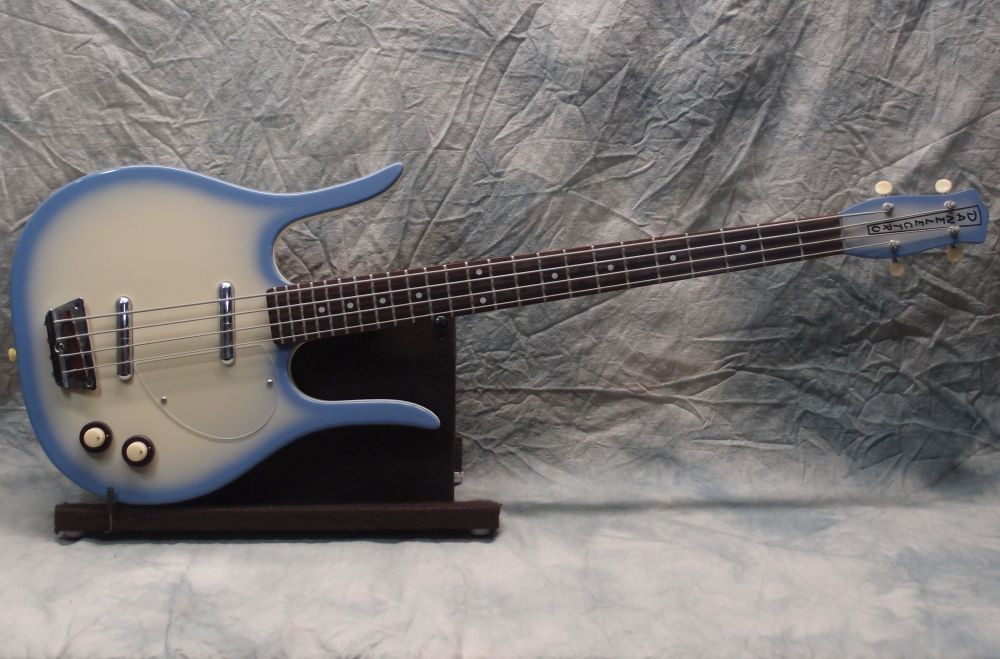 Evets '90s Danelectro Longhorn Bass guitar in sky blue finish, showcasing its unique body shape and design
Evets '90s Danelectro Longhorn Bass guitar in sky blue finish, showcasing its unique body shape and design
The Evets ’90s Danelectro Longhorn Reissue: Quality Surpassing Vintage Originals?
While vintage instruments hold a certain allure, the ’90s Danelectro Longhorn Bass reissues from Evets offer a compelling alternative, often touted as better instruments than the original 1960s models. These reissues capture the essence of the Longhorn’s unique sound and aesthetic but with improved build quality and reliability. Although a copper-burst finish might be more historically accurate, the sky blue finish shown here presents a visually striking and equally appealing option. Later reissues have even further refined the accuracy to the vintage specifications, but the ’90s models hold their own in terms of playability and tone.
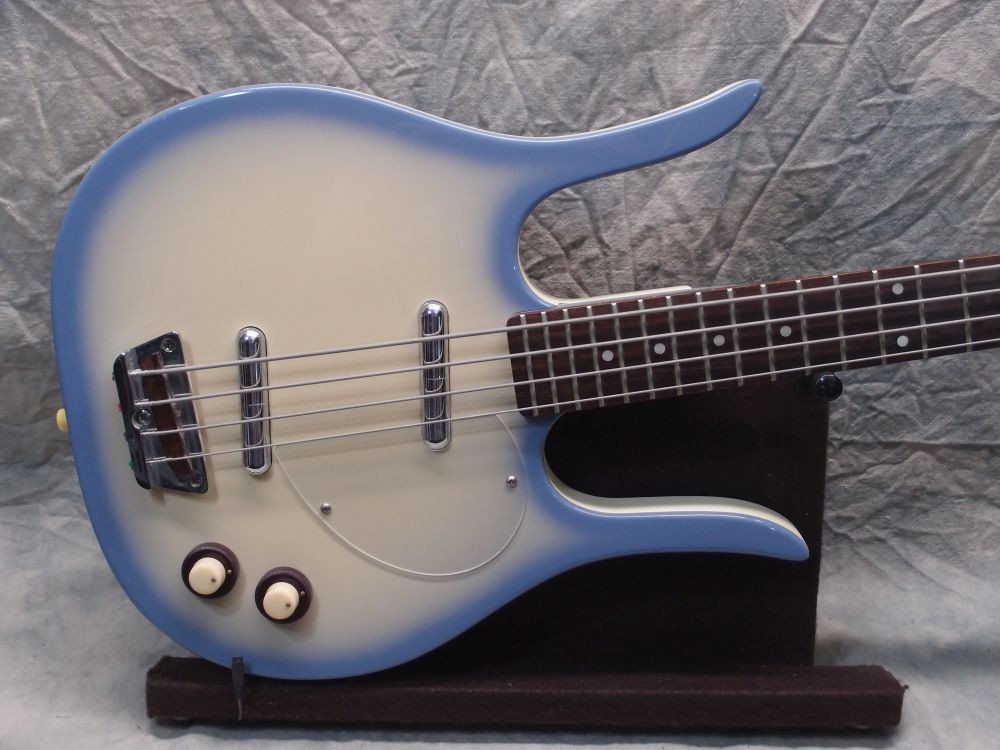 Close-up view of the Danelectro Longhorn Bass guitar headstock, highlighting the tuners and headstock shape
Close-up view of the Danelectro Longhorn Bass guitar headstock, highlighting the tuners and headstock shape
A Closer Look at a 1999 Sky Blue Danelectro Longhorn Bass
This particular Danelectro Longhorn Bass, with its eye-catching sky blue finish, appears to be manufactured in 1999, based on the serial number. When initially acquired, it featured a clear pickguard, a detail visible in the picture below. Over time, as seen in the subsequent image, the pickguard has aged and yellowed, a common issue with some plastics from that era. Another detail to note in the pictures is the bridge design; it utilizes holes for the strings rather than notches, a characteristic feature of this model.
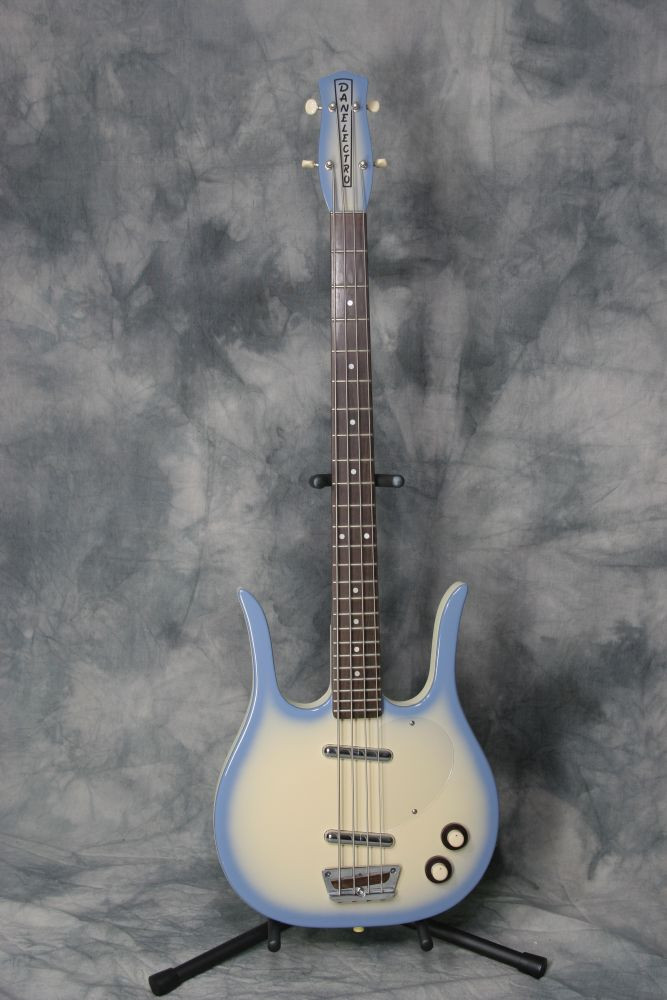 Image of the Danelectro Longhorn Bass guitar shortly after acquisition, showing the clear pickguard
Image of the Danelectro Longhorn Bass guitar shortly after acquisition, showing the clear pickguard
Pickguard Yellowing and a DIY Replacement Solution
The yellowing of the pickguard over the years is a noticeable cosmetic change. This issue isn’t unique to Danelectro, as many plastics from this period can exhibit similar discoloration. Drawing from experience addressing a similar problem with a brown pickguard on another guitar, a replacement was crafted for this Longhorn Bass. Using acrylic material sourced from a hardware store, a new pickguard was fashioned. This same acrylic material has been used on a Longhorn guitar for over a decade without any signs of yellowing, suggesting a more durable and stable solution.
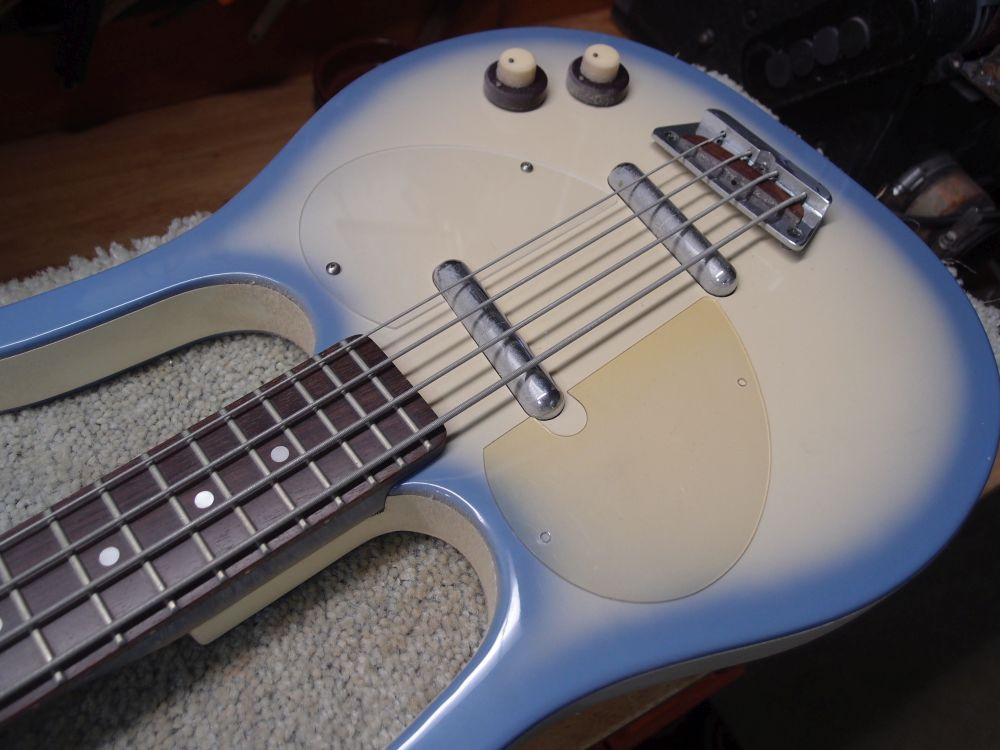 Image showing the aged, yellowed pickguard of the Danelectro Longhorn Bass guitar
Image showing the aged, yellowed pickguard of the Danelectro Longhorn Bass guitar
Superior Finish and Rosewood Quality
Despite being designed as an affordable instrument, the Korean-made Danelectro Longhorn Bass reissues exhibit impressive craftsmanship. The finish quality and the rosewood fretboard are particularly noteworthy. The fit and finish are described as flawless, defying expectations for an instrument in this price range. This attention to detail further contributes to the perception that these reissues often surpass the quality of the original vintage models.
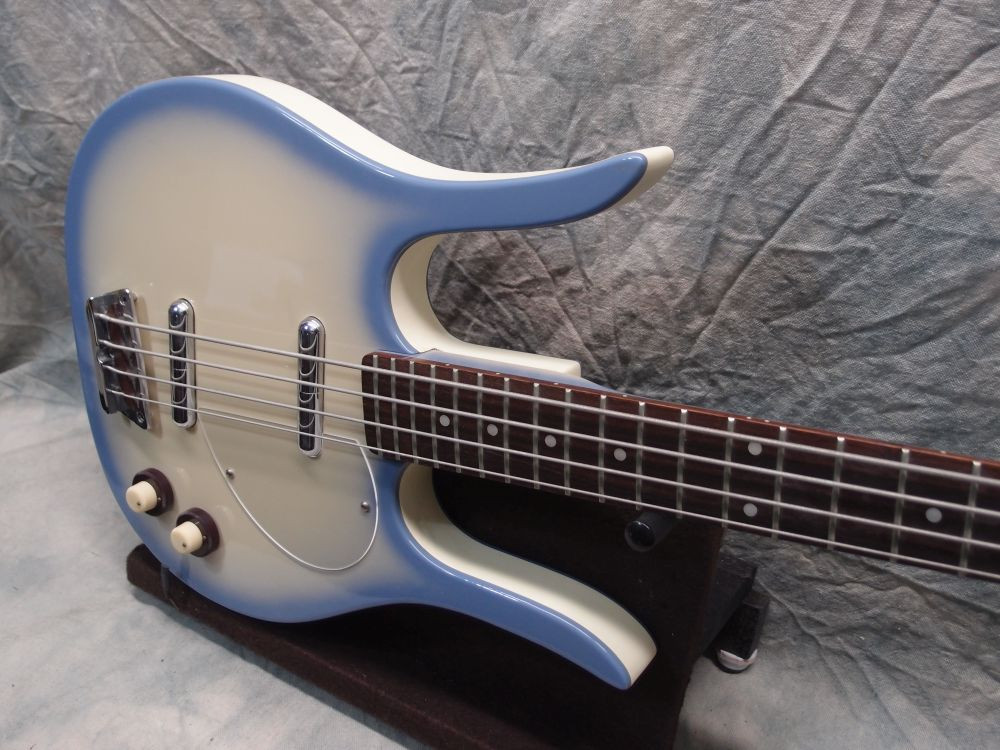 Detailed image of the Danelectro Longhorn Bass guitar body, showcasing the finish and tolex binding
Detailed image of the Danelectro Longhorn Bass guitar body, showcasing the finish and tolex binding
Addressing the Binding Issue
One known weak point in Danelectro reissues is the binding, the vinyl tape that edges the body. This vinyl binding is prone to shrinking over time, potentially due to adhesive degradation, and can detach, particularly in the curved sections of the Longhorn body. It’s highly likely that the binding on this particular bass has been replaced at some point, as it shows no signs of this common issue around the distinctive horns. While factory replacement binding was once available, better and more durable methods for binding replacement have since been developed.
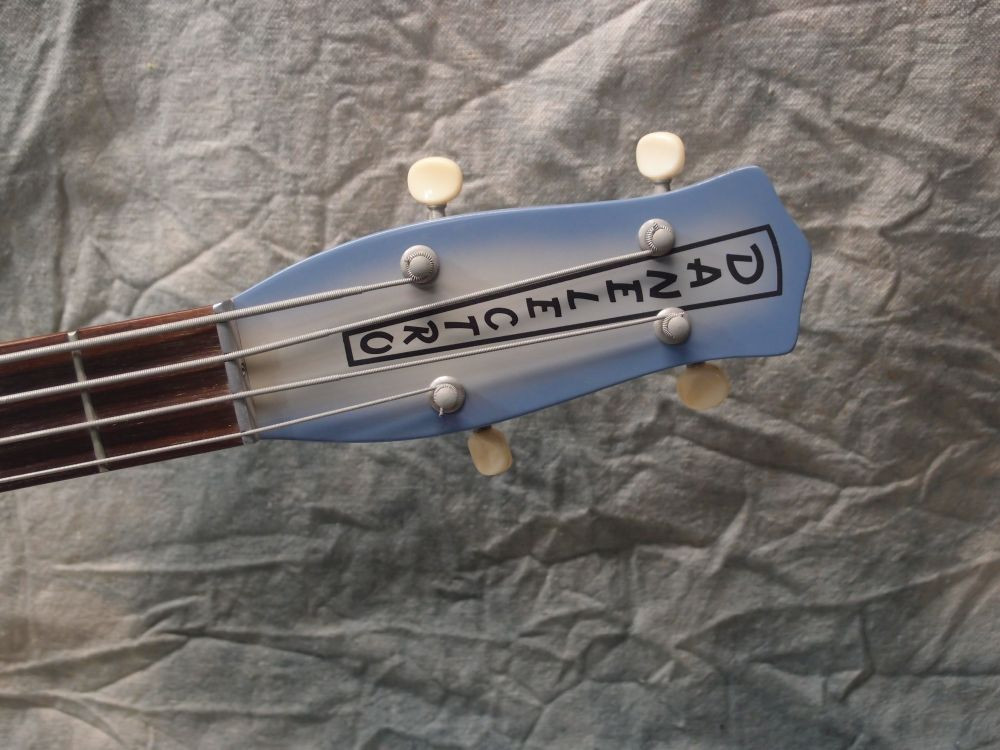 Close-up image of the Danelectro Longhorn Bass guitar body binding, highlighting the tolex material
Close-up image of the Danelectro Longhorn Bass guitar body binding, highlighting the tolex material
Minor Modifications: Noise Shielding and Vintage Knob Markers
In an attempt to further optimize the instrument, vintage-style folded-foil noise shielding was added to the interior. However, this modification proved to be sonically ineffective. Lipstick pickups, a signature feature of Danelectro basses, are inherently quiet and resistant to noise, rendering the shielding redundant. A subtle yet vintage-correct detail is the addition of tiny brass nails to fill the marker holes in the knobs. This small touch is historically accurate and adds to the overall vintage aesthetic of the instrument.
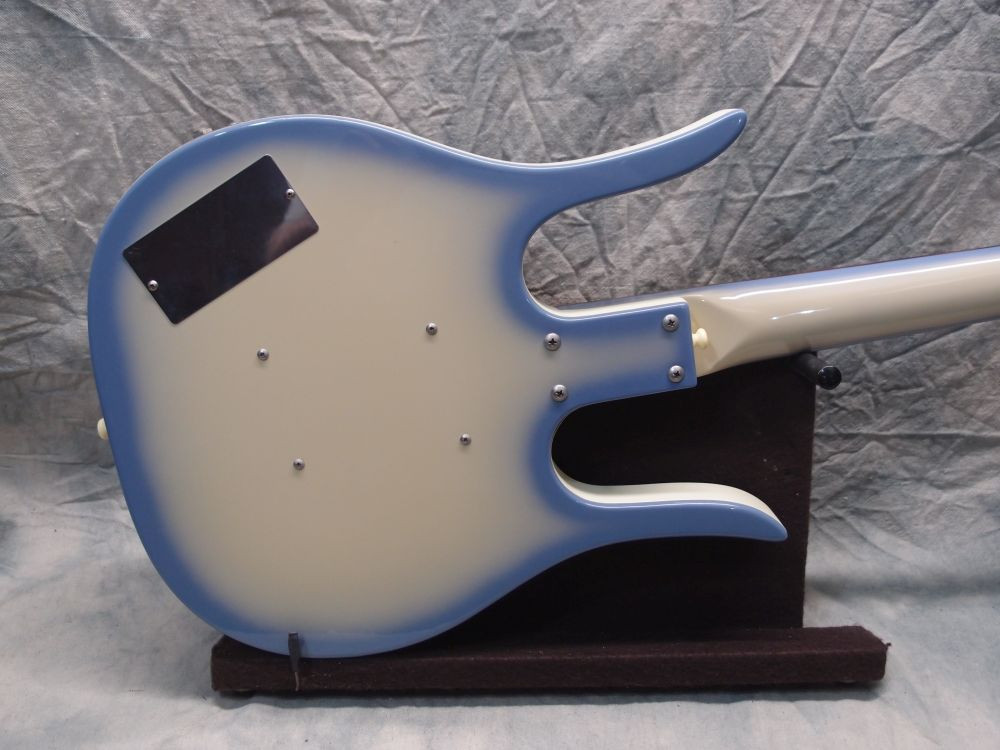 Image of the Danelectro Longhorn Bass guitar control knobs with brass nail markers
Image of the Danelectro Longhorn Bass guitar control knobs with brass nail markers
Conclusion: A Superb Reissue of a Classic Bass
In conclusion, the ’90s Evets Danelectro Longhorn Bass reissue stands as a testament to quality craftsmanship and thoughtful design. Often considered an improvement over the original 1960s models, these Korean-made basses offer a blend of vintage vibe and modern reliability. With a few common-sense modifications to address minor aging issues like pickguard yellowing and binding, the Danelectro Longhorn Bass remains a unique and highly playable instrument for bassists seeking that classic, distinctive tone.
